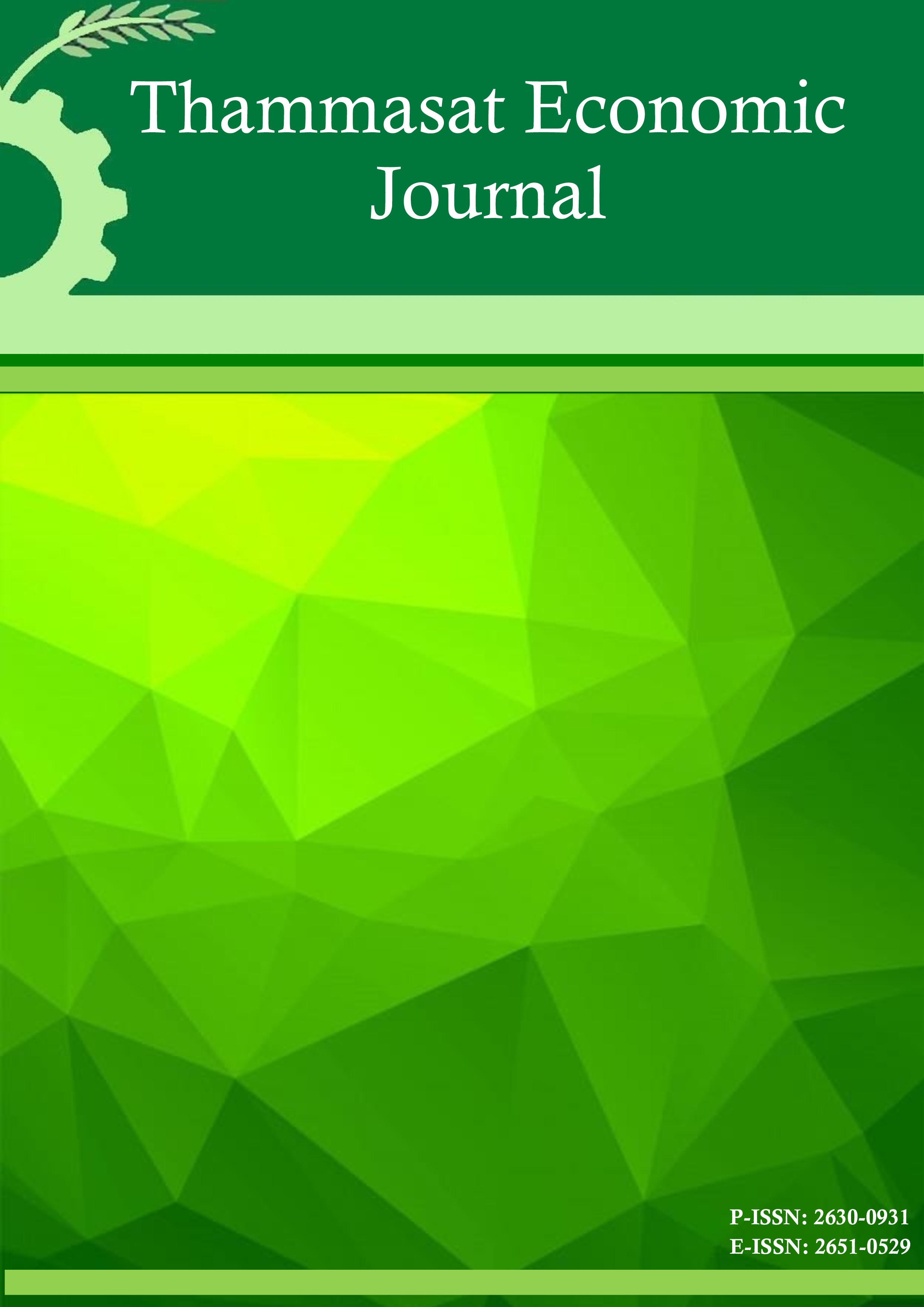Optimal Consumption Tax and Redistributive Impacts in Thailand
A Theoretical Exploration and Exercise
Abstract
There are two main aspects of the study of indirect taxation, namely those relating to efficiency and equity. Despite the theoretically limited redistributive role of indirect taxation, as theoretical exploration and exercise not having been much evidenced in Thailand’s literature, this study attempts to solve for the ‘optimal’ commodity tax rates in the context of Modified Ramsey based on alternative demand systems appropriated for the case of Thailand’s data. The redistributive impacts of the tax rates obtained in each set of demand system will be compared with those of the actual consumption tax rates collected during the past decade across all the provinces in Thailand.
References
2. Ahmad, E. and N. Stern (1984) “The theory of reform and indian indirect taxes. Journal of Public Economics,” 25(3), 259-298.
3. Apiratanapimonchai, S. (1975) A study of tax burden by income class in Thailand: a case study for 1969, MA Thesis, University of the Philippines
4. Atkinson, A. B. and J. E. Stiglitz (1972) “The structure of indirect taxation and economic efficiency,” Journal of Public Economics, 1, 97-119
5. Atkinson, A. B. and J. E. Stiglitz (1980) Lecture on Public Economics. New York: McGraw Hill.
6. Barten, A. P. (1977) “The system of consumer demand functions approach: a review,” Econometrica, 45, 23-51
7. Bhargava, R. N. (1969) Indian Public Finance, Chandausi: B.D. Bhargava and Sons
8. Blundell, R. and R. Ray (1982) “A non-separable generalisation of the linear expenditure system allowing non-linear Engel curves,” Economics Letters, 9(4), 349-354.
9. Cnossen, C. S. (1977) Excise systems: a global study of selective taxation of goods and services. Baltimore: John Hopkins Press.
10. Diamond, P. A. and J. A. Mirrlees (1971) “Optimal taxation and public production II: Tax rules,” American Economic Review, 61, 261-278
11. Deaton, A. (1981) “Duality, separability, and functional structure: Theory and economic Applications,” Journal of Economic Dynamics and Control, 3, 385-387.
12. Dodgson, J. S. (1983) “Expenditure function estimates of the efficiency and distributive impact of indirect taxes in the United Kingdom,” European Economic Review, 20, 59-78
13. Gulati, I. S. (1994) “Calculating fiscal deficit, a note on certain capital receipts,” Economic and Potitical Weekly, May 21, 1994, 1297-1298
14. Harris, R. G. and J. G. Mackinnon (1979) “Computing optimal tax equilibria,” Journal of Public Economics, 11(2), 197-212.
15. Kasekende, L. and R. Ray (1984) “Testing for linear Engel curves: An application of NLES to cross-country data,” Economics Letters, 14(4), 327-332.
16. Krongkaew, Medhi (2001) “Socio-Economic Characteristics of the Ultra Poor in Thailand,” Paper presented at the Seminar on Analysis of the Ultra Poor in Thailand, organised by School of Development Economics, National Institute of Development Administration.
17. Likitkijsomboon, Pichit (1985) Taxation and Income Distribution in Thailand: A Case Study for 1981. MA Thesis. Faculty of Economics, Thammasat University
18. Majumder, A. (1988) “A note on optimal commodity taxation in India,” Economics Letters, 27, 167-171.
19. Mirrlees, J. A. (1971) “An exploration in the theory of optimal income taxation,” Review of Economic Studies, 38(114), 175-208.
20. Mirrlees, J. A. (1976) “Optimal tax theory: a synthesis,” Journal of Public Economics, 6(4), 327-358.
21. Pahirah, M. (1978) Tax Incidence: A Case Study of Thailand. PhD Dissertation, The University of Hawaii.
22. Patamasiriwat, D. et al (1998) The characteristics and benefits of redistribution in public finance. Bangkok: Thailand Development Research Institute (in Thai).
23. Puttamon, W. (1990) Distributional Implications of Indirect (Consumption) Taxation in Thailand, MA Thesis, Faculty of Economics, Thammasat University
24. Ramsey, F. P. (1927) “A contribution to the theory of taxation, Economic Journal, 47-61.
25. Ray, R. (1982) “Estimating utility consistent labour supply functions: some results on pooled budget data,” Economics Letters, 9(4), 389-395.
26. Ray, R. (1985) “On calculating the optimal commodity tax rate: an alternative to social welfare maximisation,” Economics Letters, 19(4), 355-358.
27. Ray, R. (1986a) “On selling indirect taxes in India, using the Ramsey approach: Evidence from household budget data,” Journal of Quantitative Economics, 2 (2), 263-274.
28. Ray, R. (1986b) “Optimally uniform commodity taxes and non-linear Engel curves: a generalisation of the linear case,” Economics Letters, 22(4), 365-368.
29. Sah, R. K. (1983) “How much redistribution is possible through commodity taxes?,” Journal of Public Economics, 20, 89-101.
30. Tinakorn, P. (2002) “Inequality from Income distribution in the past four decades of development,” 2002 Symposium Paper, Bangkok: Faculty of Economics, Thammasat University (in Thai).
31. Tullock, G. (1997) Economics of Income Redistribution. London: Kluwer Academic Publishing.










